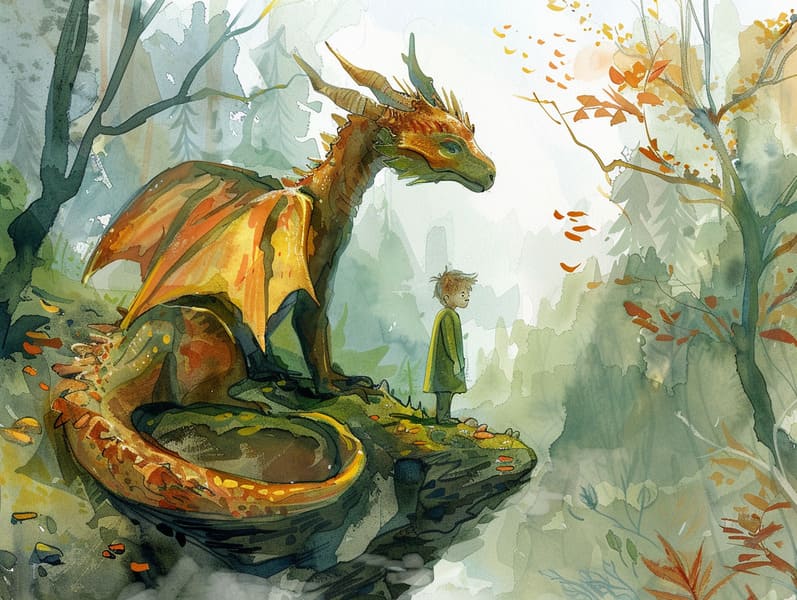The Start of Traditional Fairy Tales and the Timeless Splendor.
The Start of Traditional Fairy Tales and the Timeless Splendor.
Blog Article

Legendary fairy tales have enduring presence. These stories have been whispered from one generation to the next far before they were ever written down. They emerged from a variety of traditions, including American traditions. They were initially conveyed among grown-ups, often carrying themes and messages aligned with the societal norms and beliefs of the time.
Jacob and Wilhelm Grimm, Jacob and Wilhelm (the Grimm brothers), were among the first to assemble many of these beloved narratives. Their collection, "Grimm's Fairy Tales," included stories like "Ashenputtel," "The Story of Hansel and Gretel," and "Snow White," which have since become mainstays in the world of iconic fairy tales. Similarly, H. C. Andersen's fantastical narratives, such as "The Story of the Little Mermaid," and "The Ugly Duckling," have captivated hearts worldwide, cementing their place in the pantheon of timeless fairy tales.
Despite being ancient, these stories remain as pertinent as ever, especially as bedtime stories for kids. These magical stories are now available in numerous formats, including richly illustrated books, enchanting animations, and digital storybooks.
Their persistent charm can be attributed to several fascinating points:
Moral Lessons: Classic fairy tales often convey important moral lessons. Tales like "The Wolf and the Liar" teach the benefit of being truthful, while "The Story of the Tortoise and the Hare" underline the qualities of tenacity and humility. These tales offer young ones clear distinctions between virtue and vice, forming their moral compass in a subtle yet meaningful way.
Warmth and Understanding: Ancient fairy tales frequently showcase beings facing problems and hurdles, inciting audiences to connect with their struggles and rally behind their triumphs. For instance, "The Tale of Beauty and the Beast" demonstrates the importance of valuing inner qualities to perceive the inner core of a character, developing understanding and appreciation.
Cultural Comprehension: Many traditional fairy tales are deeply ingrained in the cultural contexts from which they were born. Exploring these fairy tales can provide enlightening views into different historical contexts, advancing a sense of global insight and awareness.
Imagination and Innovation: The extraordinary elements in ancient fairy tales—fairy godmothers—promote children’s visions. These narratives guide readers to imaginary realms, promoting fantasy dreams and a sense of delight that lasts a lifetime.
Classic fairy tales are not only delightful but also didactic. They work as alluring tools in developing various mental and emotional abilities in kids. When timeless fairy tales are read aloud, they advance communication skills by introducing new lexicon and complicated sentence structures. This practice also strengthens listening abilities and concentration, as kids keep up with the story, excited to see what happens next.
Furthermore, discussing the themes and characters of old fairy tales can improve cognitive skills and intellectual skills. Young ones learn to see patterns, anticipate outcomes, and comprehend cause and effect. These reflections also encourage kids utter their thoughts and feelings, nurturing their emotional intelligence.
In today’s technological era, the accessibility of digital storybooks has made these tales more obtainable than ever. Internet resources and apps feature extensive collections of timeless fairy tales that can be browsed or listened via awesome site anytime, anywhere. Fairy tales read out loud are particularly well-received, supplying an captivating way for young ones to relish these spellbinding stories. Spoken stories and read-aloud videos guide characters and settings to life, often joined by delightful music and tunes that boost the narrative adventure.
The timeless appeal of timeless fairy tales lies in their ability to modify to present eras while maintaining their key morals. Contemporary retellings of these narratives often present more diverse figures and modern settings, making them relatable to today’s audience. However, the essential messages of fearlessness, charity, and fairness remain unchanged, continuing to affect kids of all ages.
Fairy tales also offer a sense of reassurance and familiarity. They put forth a orderly narrative with a unmistakable beginning, middle, and end, often finishing with the solving of conflicts and the triumph of justice over injustice. This certainty can be solacing for the young, gifting a sense of invariability in an dynamic world.
Classic fairy tales continue to fascinate and guide new generations, maintaining their grace and significance in modern society. As bedtime stories for kids, they make accessible a perfect blend of captivation and insight, developing moral values, empathy, and creativity. The prevalence of online fairy tales and the well-received status of fairy tales narrated secure that these classic tales remain acquirable to new generations.
By defending and circulating these stories, we continue to extol the rich tapestry of fables and cultural heritage. Whether you are viewing a artistically illustrated book, viewing a web collection, or listening via an audio story, the charm of timeless fairy tales is always within reach. These fairy tales remind us of the everlasting strength of stories and its ability to unify us across centuries and lands.
Whether you are enjoying a beautifully illustrated book, experiencing a internet library, or hearing an sound book, the captivation of bedtime fairy tales is always within reach.
These narratives remind us of the ageless magic of narratives and its ability to link us across time and space, forming a connection that captivates and teaches alike.